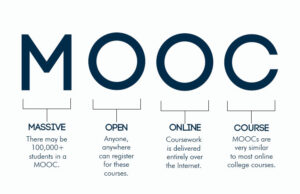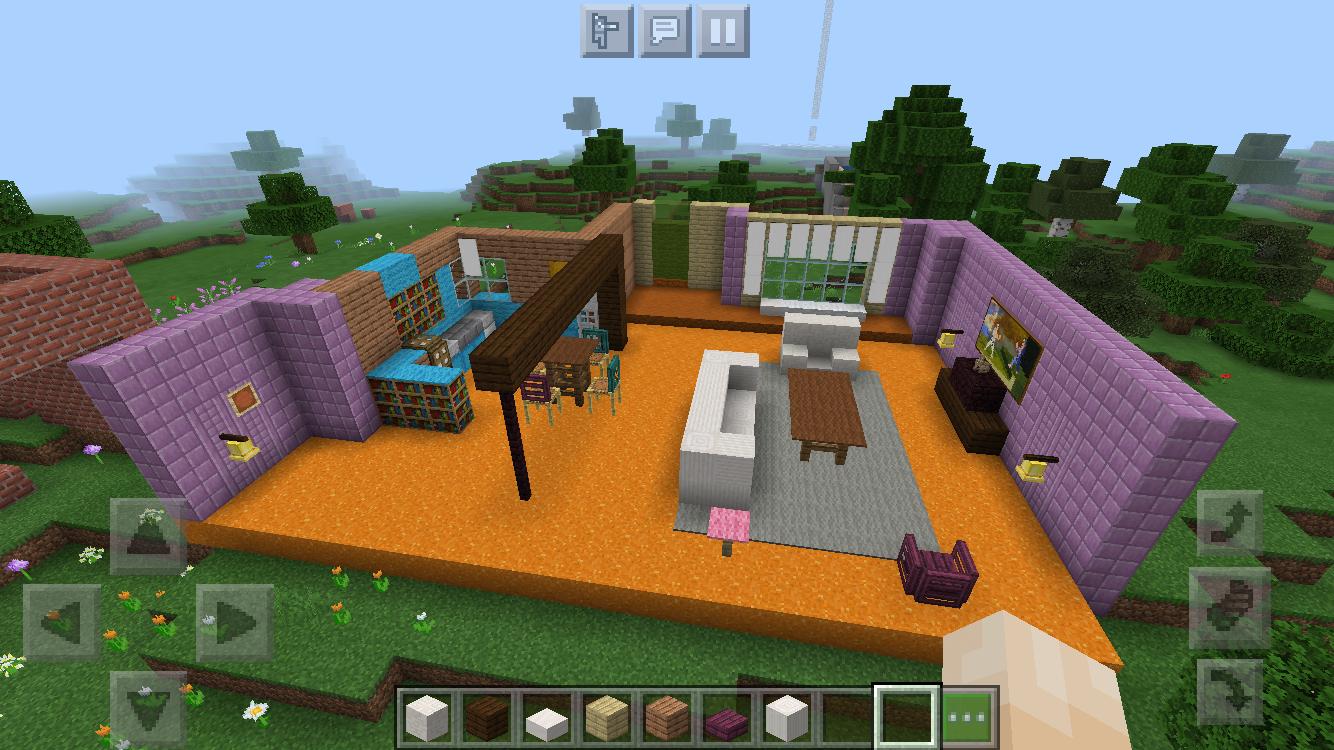DATA VISUALIZATION

This week I have discovered that there is a Whatsapp group of the IDEL cohort, as well as a Facebook group! I joined both of them and it has been nice to share thoughts and know people from the course beyond the University platform. This week I feel quite different than other weeks where I felt overwhelmed, intimidated and alone. being part of this informal context has allowed me to see that we are all in the same boat, struggling with the readings, time and blog post.
We have crossed the equator of the course and people are experiencing the pressure and tiredness. Probably because of that, we organised a Zoom call to comment on the MOOC task and share some ideas. I guess we all had the need to share and get ideas from others because our brains are starting to get dreined, I am sure we have been able to produce better individual ideas and blog post after that videocall.

In my opinion, I think we were being very critical with MOOCs, embracing the attitude learned from this week articles. At some point, I felt the need to take part in the positive side and here are some of my optimistic way of analysing open education.
For me is difficult to have a strong opinion against MOOCs, because even though I am aware and acknowledge all the limitations and problems, I think they are not a bad idea per se. I think they can be a good ally to minimise the world inequalities.
First of all, I wanted to use some open-source programmes to do the video, I was playing a little with OpenShot and Kazam, sadly my laptop died finally this week, and I needed to find other ways to record last minute. You will see in the video that appears the name of my husband… Long story short, I used his work laptop and an internal tool to record and his name is everywhere… sorry about.

Find here the summary of the main ideas of the video, and the questions I wanted to raise. I know that 16 minutes of a not very fluid video are difficult to swallow 🙂
Structure, design elements:
Thoughts and questions:
On the other hand, I found the post I wrote last year when I was attempting to do the course for the first time. Find the text here, in case you are interested, I realise now it was not a deep analysis…
Knox, J. (2013). The limitations of access alone: moving towards open processes in education. Open Praxis, 5(1), pp. 21-29.
Following your suggestion about trying to go further into exploring the use of different resources this week I have intended to use tools I never used before, for example, ThingLink, actually, I think it is the first time I do an interactive image.
In this image I am trying to express what is my engagement with the IDEL course, making special attention to this week’s topic: learning spaces.
I used the University ID because it is my personal connection to the programme. I wanted to make the ID the protagonist of the image story. I carry my ID everywhere, basically because I have it in my phone case. An interesting fact is that I don’t carry it in my wallet. When I got it, I decided to put it on the phone case where I don’t have many spaces for ids, but I keep the important ones: bus ticket, debit card and university ID. Why did I decide to carry it there? I am not sure, maybe I am giving some mysticism, but I have realised that this ID is what makes me feel connected to the course and makes me identify as a student, probably it what makes me feel to be in the campus, whatever I am, embracing the concept of new mobilities paradigm’ that is discussed by Bayne, Gallagher and Lamb (2014), which supports learning in unbounded regions and terrains.
It has shown that the material campus continues to be a symbolically and materially significant ‘mooring’ for a group of students who may never physically attend that campus.
Bayne, Gallagher and Lamb (2014)
With the image, I want to present the different places where I have engaged with the IDEL course and the different tools and resources I have used so far. I would say that my laptop has been my main moored item. It is quite funny because my laptop is not portable anymore, it only turns on when is charging, so it really moors me. However, I feel that my learning space has been fluid in terms that I move around my home depending on what is space is free and quiet to be. Usually, the headquarters is my living room, a comfortable armchair in a nice corner where I like to sit to read and, of course, to write all the post in my blog.
Sometimes, I go to use the uplift desk (usually when I want to keep my eyes open and don’t fall asleep), or a read in the bedroom when everyone is sleeping. On this week Padlet I have discovered that some classmates use a voice reader to hear the articles and be able to do another thing at the same time. I have been inspired by them, and I am sure I will use it in the future to brake more bounded and rigid container that is “reading”.
As you can see in the image, I have used a Kindle, which helped me to be freer and bring my learning space outside the house, for example checking the materials from a playground. But I have also used inside, reading in the Kindle and writing in the laptop. Many times I have found myself having two virtual places used at the same time, for example playing Minecraft on my phone while I was checking tutorials on the laptop. I can say that I have deflated the sedentarist claims.

I have spent too much time deciding what kind of bot I would like to prototype. As I mentioned in a previous post, I was considering different ideas (FQA, math problems, grammar helper…). I realized that I was considering two types of bots, based on two different approaches.
One scenario would be “building” ca bot similar to the ones we have checked on Twitter. These kinds of bots don’t have a real bidirectional interaction. These bots are based on a code that tweets something every X time. For example, the one I talked about in the other post from the museum. We can see how this kind of bots are exposing a topic, publishing tweets with a concrete topic and there is no interaction with people that reads it. The majority of bots we have found as a class are in that direction, probably because the Twitter platform stimulates this particular use of bots.
Considering this approach, I liked the idea of having a bot that tweets problems that students would solve. Maybe instead of mathematical problems itself, the bot would tweet riddles where the knowledge of mathematics is needed, to make it more playful and nicer than a typical mathematical problem. Students could check the message – riddle and use a hashtag to expose their ideas and possible solutions.

A second scenario I have been thinking is a more interactive bot, where students can ask and get answers. Maybe this bot is more sophisticated and would need more code knowledge behind, but also are probably richer and can be really considerate a teacher bot*, as we see in the article of Bayne S. (2015). Teacherbot: interventions in automated teaching, and their “botty”. In these bots we see how a student or, the bot itself, can start a short conversation tha will trigger a level of learning.
In my idea of having a grammar helper bot (to support the learning of a second language), we can imagine how a student would ask a question related to a grammar doubt, for example: Tell me what is the conjugation of past simple for the verb to sign. The chatbot will understand the query and will give a correct answer. Therefore, the bot we could offer a sentence as an example of the use of this conjugation. Also, we can be more ambitious and the student would ask the bot to check the grammar of a short sentence.

Considering these two broad types of chatbots I wonder if there is (or it will helpful to have) a categorization that defines the complixity of the bot, how is the interaction between student-teacher-bot, and how this has a real impact o enhanceing the role’s teacher.
Have to admit that I was quite surprised to see that we should spend some time investigating bots as a teaching tool, I didn’t find the connection at the first, or second thought. Actually, I was surprised that bots are a hot topic still. Even my husband co-founded a start-up based on messaging and chatbots, I never thought bots could be used for people or helping in education. (I know, I know… ignorant alert!)
Until this week, I was not following bot on Twitter, for example, and I was not conscious of using it as a useful tool. Now, I would say that see their potential to encourage learning. I discovered that many museums are using Twitter bots to promote their collections. I can see how this can help people with limited resources and time to know and explore museum objects without leaving you home. Considering how is the world right now, that is very interesting…
But bots are not only useful when we have limited access to hove physically to the museums, for example. They can also play an interesting role when teachers want to introduce a topic, motivate students, and let them get familiar with a subject. Teachers can use it to introduce a future cultural visit. Using it to introduce new exhibitions related to the topic they are talking about in class, or maybe to spark interest. It was not on my to-do list, but after finding the MNAC (Museu Nacional d’Art de Catalunya) and checking some of their twits, I am looking forward to going.
As I have exposed, I see some interesting uses of having bots in class, but don’t think I am seeing all the potentiality of them… Are bots a basic AI that could substitute or at least transform the task of a teacher? Difficult to see that. I can imagine a chatbot that gives mathematical problems that students need to solve, or maybe a history bot that explains important facts. Maybe a foreign language bot that helps with grammar? After this first week, I definitely can project some opportunities of using bots when teaching. However, for me, this is so far from having a robot or automated teacher.
On the other hand, when I think about bots (or simple AI/robots) in education, I cannot stop myself from connecting the thoughts with collecting data and data analysis. At the end of the day, AI or an algorithm is using information stored in a specific database. Can we trust the data bots are using? If we begin to trust bots, without fact-checking, there is the potential risk for malicious misuse of information from those with the capability, and desire, to hack official information. We assume that teachers have some bias, but we also trust that if a teacher is in front of a class it is because they passed a trustful test (maybe an interview, exams, recognition from people of the community…). As a society, we have established some mechanisms of quality, control, and trust. Obviously, we can challenge them and question their utility and how they are formulated, but still, there is some QA process there. What is the control for bots? Why we should trust them? or what can be the protocols to make them more trustworthy?
![]()